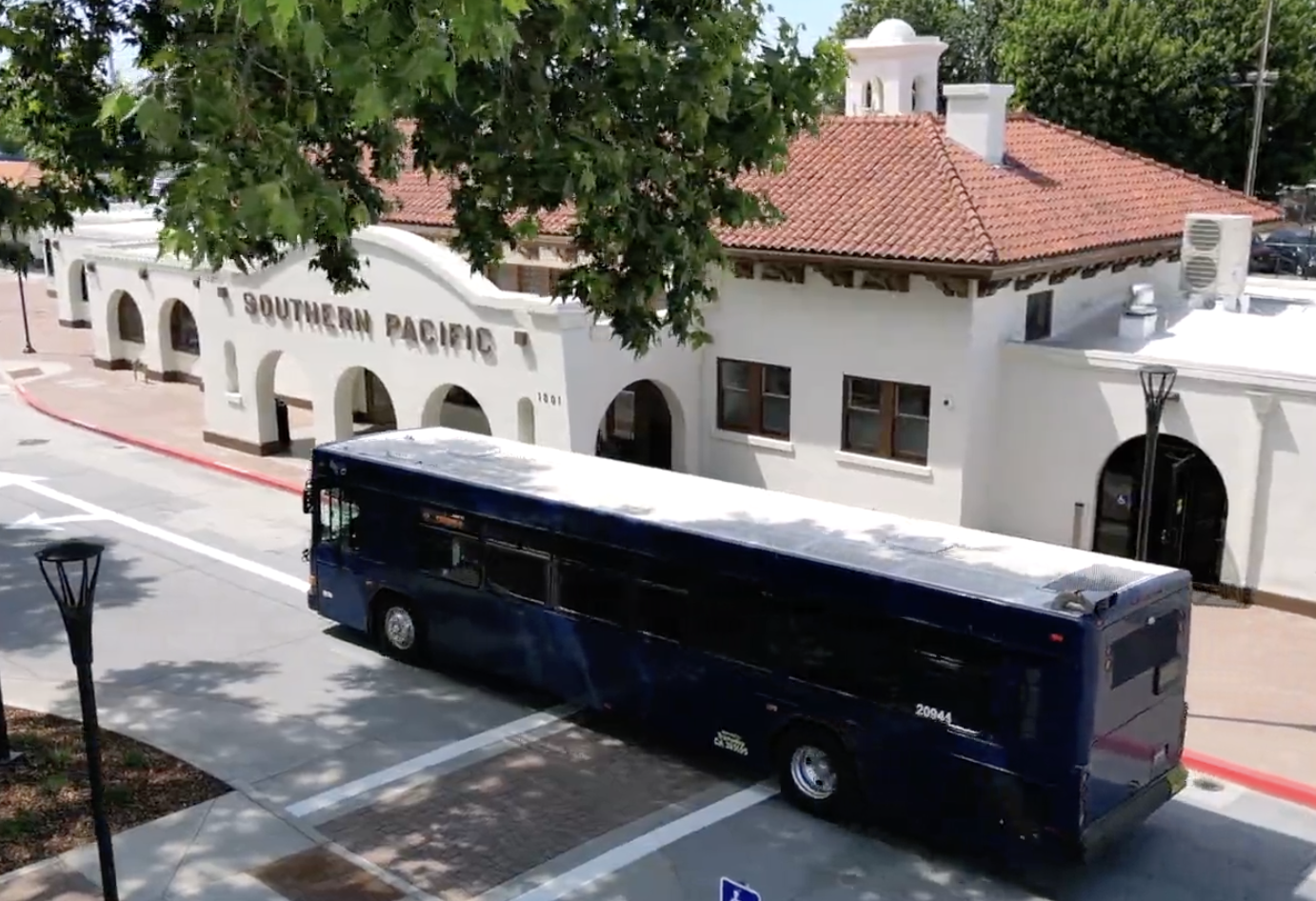"Persistence with kindness." "Don't take no for an answer." "Keep trying different things, keep pivoting." "You have to be very persistent, and kind of annoying." "District leaders should know who you are; light up their phones."
These consistent bits of advice formed one theme at the California Bicycle Coalition's biennial Bike Summit, held last week in San Diego. The ideas were repeated in very different summit sessions, by advocates as well as city planners, describing their experiences trying to get rule-bound engineers to listen to them.
Change Doesn't Just Happen
Former Caltrans Deputy Director of Modal Programs Jeanie Ward-Waller set the tone for the summit at the opening plenary session Thursday morning, urging advocates not to be stopped by recalcitrant government agencies.
"Caltrans has had a lot of recent successes in planning and policy, but also, unfortunately, in platitudes," she said. "The good work being done there" - including new Complete Streets policies, new design standards for bikeways and safe infrastructure, and new active transportation plans in every district - "has not yet translated into the engineering and construction divisions."
Ward-Waller is perhaps best known at the moment for having been let go from her job at Caltrans for doing it too well. Her story - that she questioned some planned highway expansions that were counter to Caltrans policies, and threatened to call the state auditor, and consequently was let go - is well known by now, but summit attendees were eager to hear it directly from her.
The experience was earth-shattering, she said, but the intense media attention also gives her hope. "The public is very interested, and sees that they see the problems with continuing to widen highways, with constant construction, with displacement."
And her six years at Caltrans did not leave her jaded about the state transportation department, either. She said Caltrans is "full of really good people," not just among her team in the sustainability programs, but among the rank and file of the department. But, she said, the state department of transportation "is a machine for building and expanding highways. It is really good at managing highway projects. And it will continue to do so for decades if we don't push hard to change that."
Caltrans needs to change. It needs stronger leadership at all levels, and it needs to hear from advocates. "They need to know you, they need to feel pressure" to change, she told the crowd. "Get to know your Caltrans District Director," she said. "Call them. A lot. Light up their phones. Annoy them. Get local electeds to call them too. That's very effective."
"You have to be persistent, and kind of annoying," she said. "We do that well as advocates." Also, internal changes at Caltrans, including complete streets and design guidance, are useful tools. Know them, and remind local districts that they are supposed to follow them, and ask questions when they don't - or give excuses not to, she said.
It's Not Just Caltrans
And not just Caltrans. "Decisions are made every day at all levels," among state agencies like the California Transportation Commission and the California Air Resources Board, but also at regional MPOs and county boards and city councils. "And these are not just local projects; local decisions seed larger projects," she said. "Once those get started - even with something like a small grant for exploratory planning - it's hard to stop them."
That's in part because the problems that need solving are real, and engineers have identified a vision for solving them - usually involving widening or expanding an existing road. "Until the community comes up with a [different] solution, those zombie projects will keep coming back," said Ward-Waller. Even where projects seem to have been stopped, they can rise again - the 710 freeway expansion in Southern California is an example. Although that project seemed to come to an end when its environmental review was found to be inadequate, the project is back, and the plan to add more lanes to the freeway is very much a part of it.
"Caltrans is really good at using jargon, and acronyms, and excuses," said Ward-Waller. "So we need to keep trying things; to find ways to pivot. Don't take 'no' for an answer."
Fire Departments Too
The same message was repeated in other summit sessions, including one in which Charlie Ream, Senior Transportation Planner with the Oakland Department of Transportation, described the years-long process of getting the Oakland Fire Department to agree to some street redesigns the city wanted to use in its downtown.
Fire departments tend to oppose street redesigns that include elements they fear will block their trucks or increase emergency response time. Measure HLA in Los Angeles, for example, which merely told the city to build the safety measures already in their plans, was heavily lobbied against by the local fire department. At the summit session, the room seemed to be full of people who had run up against the same obstacle: the local fire department.
In the case being discussed, OakDOT and the fire chief had been working towards agreement on specific issues. But the fire chief left for another job, and their replacement rejected the designs out of hand because they varied from fire code standards.
The city could have given up - and that is frequently the end of the story. Instead, they adopted the mantra "persistence with kindness" and refused to take no for an answer. The city asked why the fire code had to be rigidly adhered to; they asked how the fire department used the "at least twenty feet of unobstructed width" it called for. They stuck with it, diving into the details, and invited the department to bring its trucks to the site to test their cranes and lifts and ladders. The firefighters were happy to show off their equipment, and were able to make some things work that the fire code would have rejected.
At length, the two departments came to an agreement on a few specifics. For example, the "unobstructed width" could be located on either side of a pedestrian refuge island and didn't have to be on both sides, giving the city leeway to add a few islands near intersections. Then they put the agreements in writing so that, in case a new fire chief comes on the scene, they have a record of them.
Be Ready to Keep Coming Back
"That provides a foundation for future review and discussion," said Ream, rather than an across-the-board policy change. The fire department values its veto power, he said, so for now they will continue to make design decisions on a case-by-case basis. OakDOT is working with the department on design details such as the required width between flex posts (their plastic bases can cause difficulties for some of the fire department lifts), a mountable median, speed cushions that don't impede fire trucks, and standards for closing roads to vehicles. It will all involve more field visits, but that also means more relationship building between the two city departments.
OakDOT did not do this alone. Local advocacy groups including Bike East Bay, Walk Oakland Bike Oakland, and the Traffic Violence Rapid Response had been pushing hard for the street redesign for years. Which brings up another point highlighted by Ward-Waller: it is crucial for sustainable transportation advocates to work in coalition. Not only are there allies in city departments and other like-minded organizations, but environmental, equity, public health, and climate-focused groups have similar goals and want the same outcomes. "We have to support their priorities as well," she said. "It takes so much [work], and the importance of working together in coalition has never been more important."
Streetsblog will have more coverage of the bike summit later this week.





